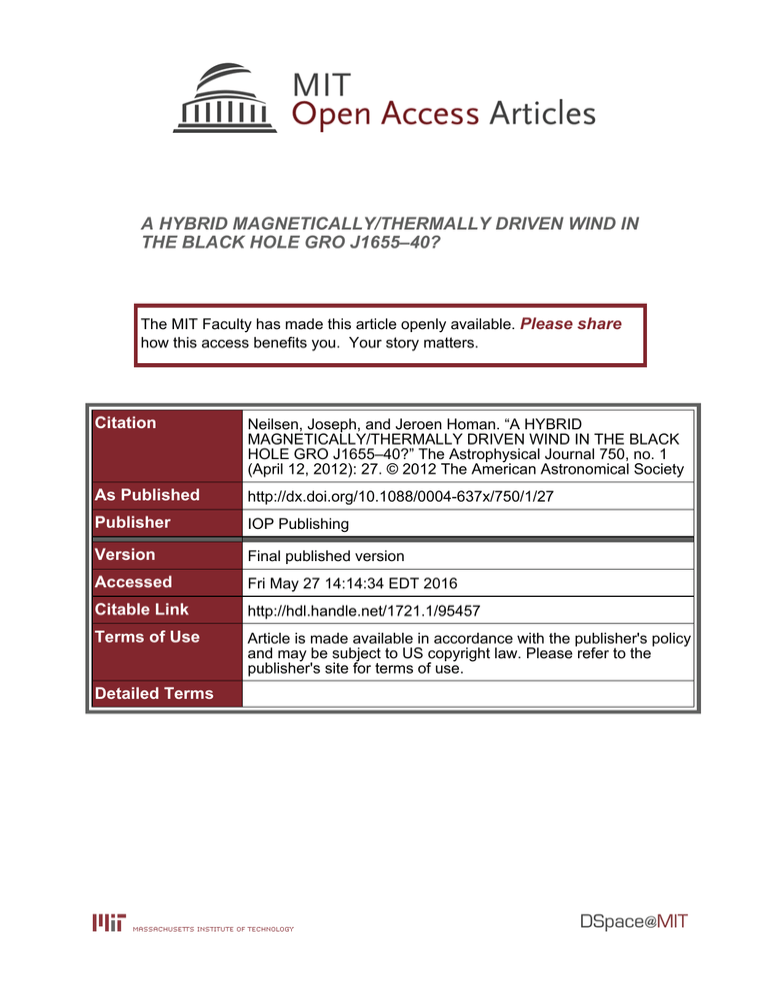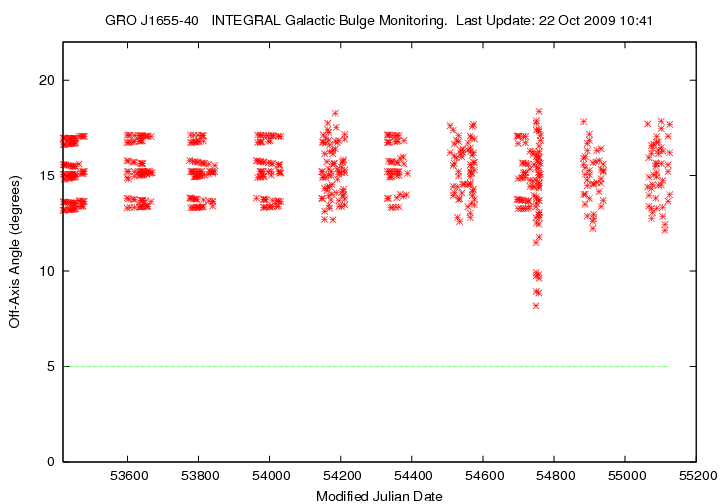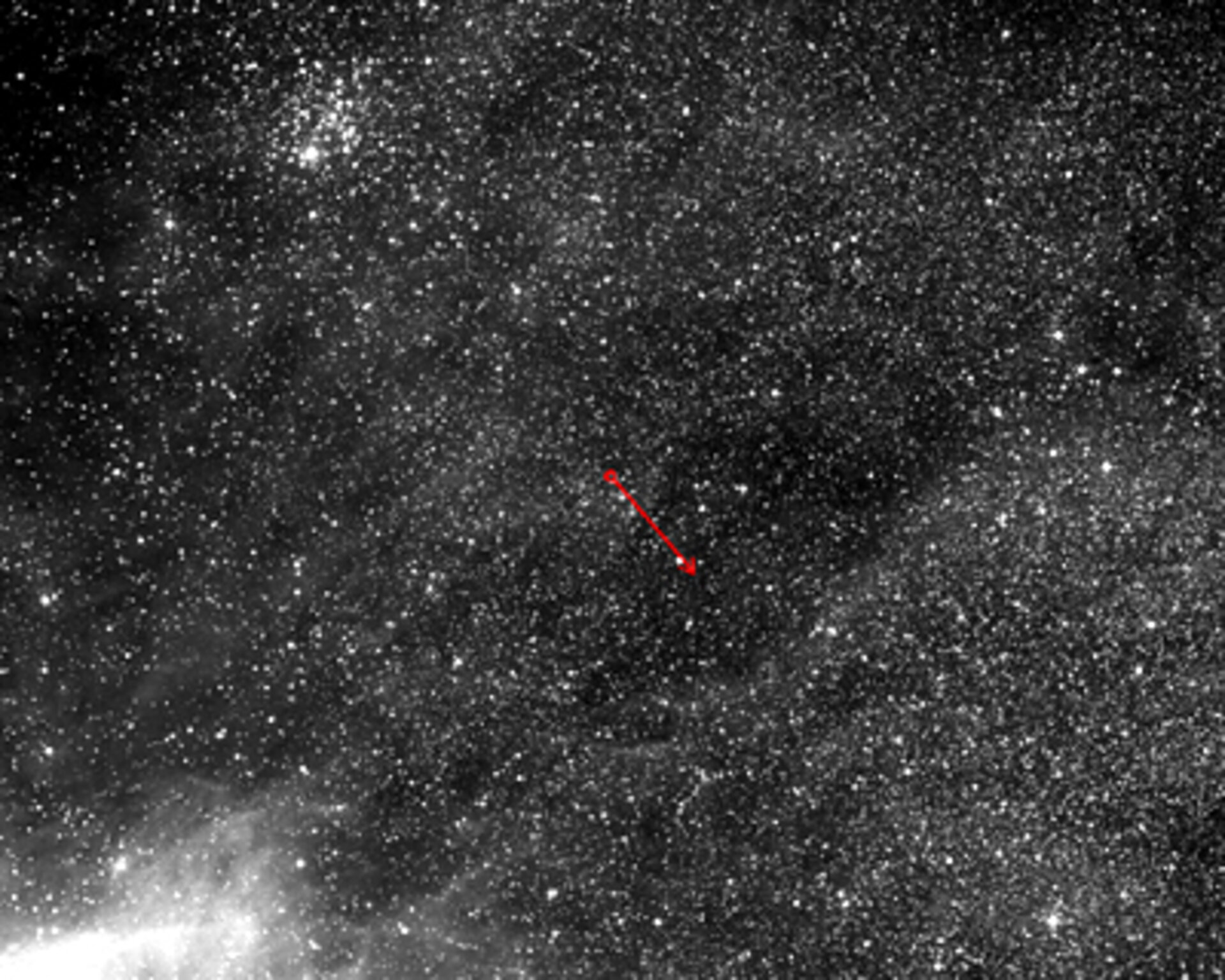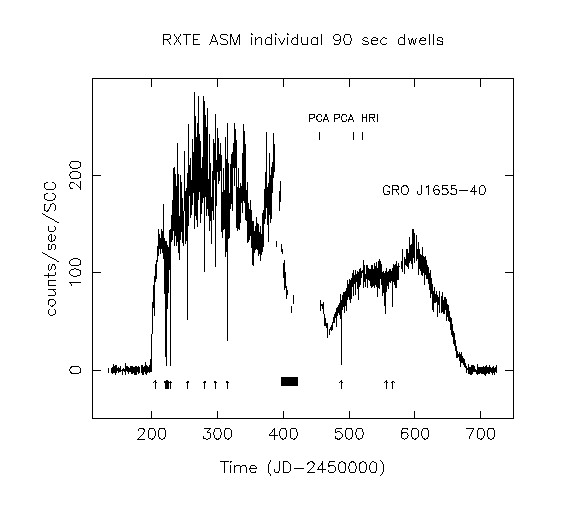
(PDF) On the distance of GRO J165540
The black hole X-ray binary transient GRO J1655-40 underwent an outburst beginning in early 2005. We present the results of our multiwavelength observational campaign to study the early outburst spectral and temporal evolution, which combines data from X-ray (RXTE and INTEGRAL), radio (VLA), and optical (ROTSE and SMARTS) instruments.During the reported period, the source left quiescence and.

A HYBRID DRIVEN WIND IN THE BLACK HOLE GRO J165540?
GRO J1655-40: Early Stages of the 2005 Outburst - NASA Technical Reports Server (NTRS) As of October 27, 2023, NASA STI Services will no longer have an embargo for accepted manuscripts. For more information visit NTRS News. Back to Results

GRO J165540
GRO J1655-40: Evidence for a Spinning Black Hole. Drawing Credit: A. Hobart, CXC. Explanation: In the center of a swirling whirlpool of hot gas is likely a beast that has never been seen directly: a black hole. Studies of the bright light emitted by the swirling gas frequently indicate not only that a black hole is present, but also likely.

Position of GRO J165540 on a R band image from the Digitized Palomar... Download Scientific
GRO J1655-40: Evidence for a Spinning Black Hole Drawing Credit: A. Hobart, CXC Explanation: In the center of a swirling whirlpool of hot gas is likely a beast that has never been seen directly: a black hole.

Space in Images 2003 04 Microquasar GRO J165540
GRO J1655−40 was observed on 20 occasions and data were obtained by all instruments for the majority of epochs. X-ray spectroscopy revealed spectral shapes consistent with the 'canonical' low/hard, high/soft and very high states at various epochs. The soft X-ray source (0.3-10 keV) rose from quiescence and entered the low/hard state.

(PDF) Gammaray observations of GRO J165540
Main. We obtained a high-resolution spectrum of the secondary star in the eclipsing low-mass X-ray binary GRO J1655-40, in quiescence phase, on 24 May 1998 with the 10-m Keck I telescope. This.

(PDF) GRO J165540 Early stages of the 2005 outburst
the observational data in GRO J1655-40, we apply a variety of twin HF QPO models based on the frequencies of the geodesic epicyclic motion of matter in accretion discs orbiting Kerr black holes, i.e. the orbital (azimuthal) frequency of the circular mo- tion, or the radial and vertical epicyclic frequencies.

GRO J1655−40 dip occurrence times Download Table
GRO J1655-40 is a well studied Galactic low-mass X-ray binary (Hjellming&Rupen1995 ;Abramowicz&Kluźniak2001Orosz etal.1997),whosedistance is ˘3Ł2 kpc (Hjellming & Rupen 1995), orbital period is 2.6 days (Greene et al.2001), and black holemassis BH =5Ł4 0Ł3 whilethecompanionstarhas mass =1Ł45 0Ł35 (Beer & Podsiadlowski2002). The

ESA Closeup of the blackhole system GRO J165540
the black hole nature of the compact object in GRO J1655-40. The proximity of GRO J1655-40 and its well determined system parameters make it one of the best laboratories for studying several important astrophysical subjects: accretion disk physics, jet/outflow production and transportation, general relativity in the strong field limits, etc. Some

(PDF) Radio Emission from GRO J165540 during the 1994 Jet Ejection Episodes
GRO J1655-40, a recently discovered black-hole candidate, is an ideal system for studying jets of material from the accretion disk around a black hole. Observations of the radio emission show two.

GRO J165540 spectral fits with Model 2 a Download Table
GRO J1655−40 is a well-studied Galactic low-mass X-ray binary (Hjellming & Rupen 1995; Orosz et al. 1997; Abramowicz & Kluźniak 2001), whose distance is d ∼ 3.2 kpc (Hjellming & Rupen 1995), orbital period is 2.6 d (Greene, Bailyn & Orosz 2001), and black hole mass is M BH = 5.4 ± 0.3 M ⊙ while the companion star has mass M s = 1.45 ±.

(PDF) Optical Observations of GRO J165540 in Quiescence. I. A Precise Mass for the Black Hole
GRO J1655-40 One of the paradoxes of black holes is that although they are completely dark -- they release no detectable energy of any kind -- they produce some of the brightest and most powerful phenomena in the universe. Many are surrounded by disks of superhot gas known as "accretion disks."

GRO J165540 moving through the Milky Way, illustration Stock Image C056/6049 Science
We report photometric and spectroscopic observations of the black hole binary GRO J1655-40 in complete quiescence. In contrast to the 1995 photometry, the light curves from 1996 are almost completely dominated by ellipsoidal modulations from the secondary star.

GRO J165540_百度百科
Artist's View of Black Hole and Companion Star GRO J1655-40. 3224 of 4503. Next. Orbit of Black Hole in the Milky Way Galaxy. About This Image. Release Date November 18, 2002 10:00AM (EST) Read the Release Release ID: 2002-30 Permissions Content Use Policy Download Options. 800 X 600, JPG (27.76 KB)

Blackhole system GRO J165540 in Scorpius ESA/Hubble
GRO J1655-40 is the second so-called 'microquasar' discovered in our Galaxy. Microquasars are black holes of about the same mass as a star. They behave as scaled-down versions of much more massive black holes that are at the cores of extremely active galaxies, called quasars. Astronomers have known about the existence of stellar-mass black.

GRO J165540
GRO J1655-40 is an X-ray nova black-hole-candidate binary discovered during an outburst in 1994. Its orbital period has been measured in the visible as 2.62 days, and it exhibits irregular outburst activity. Dynamical measurements suggest that the compact object is a ~7 solar mass black hole.